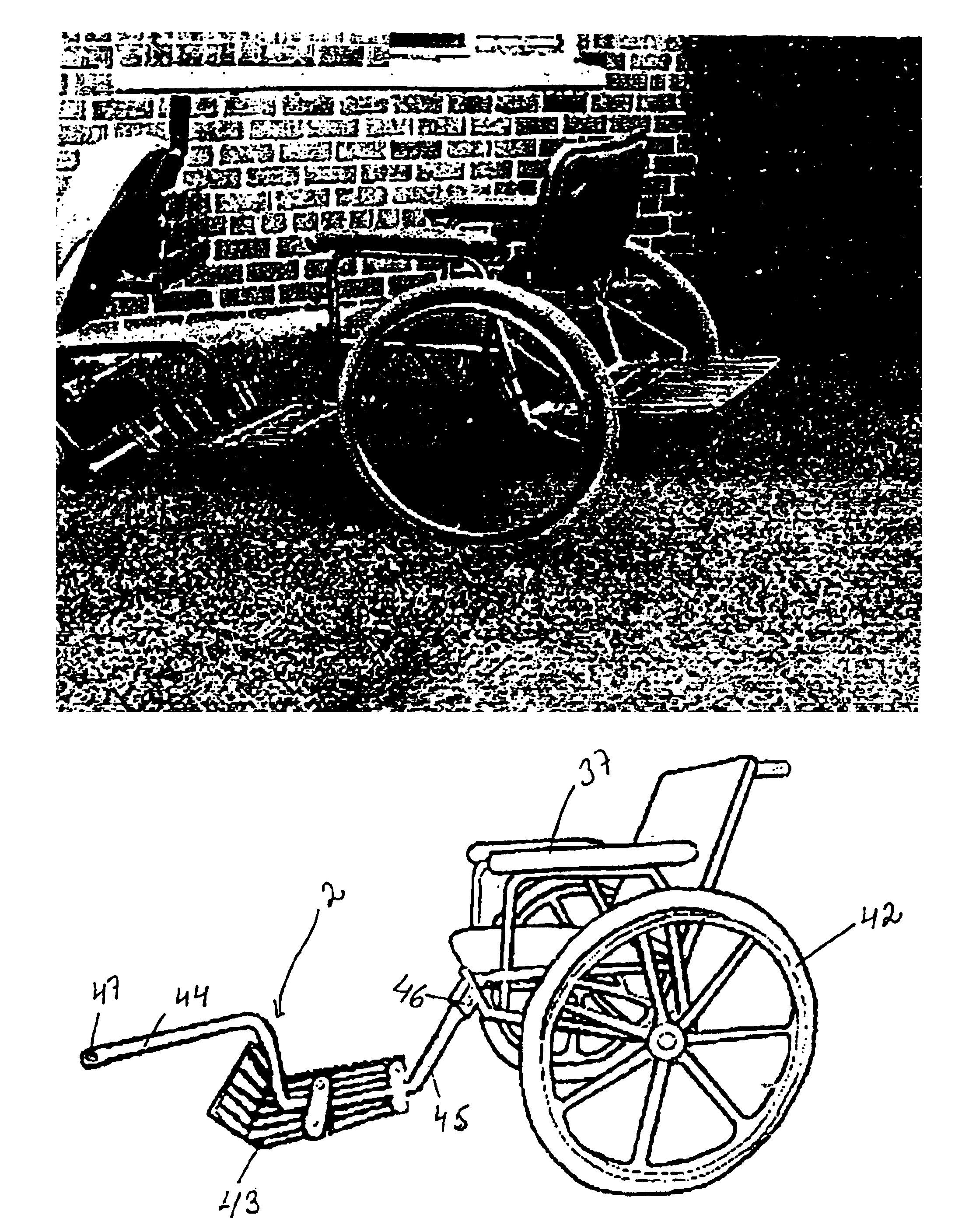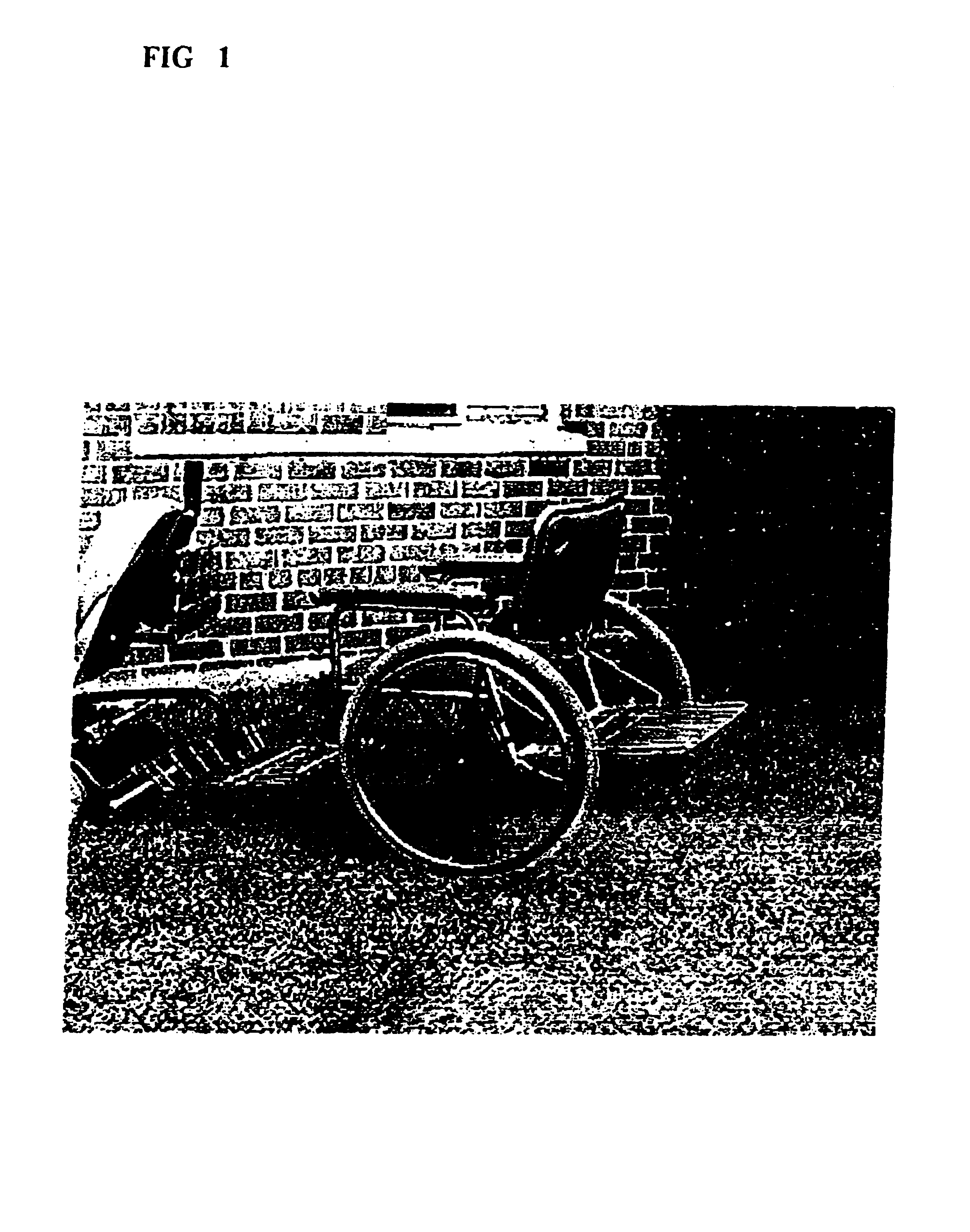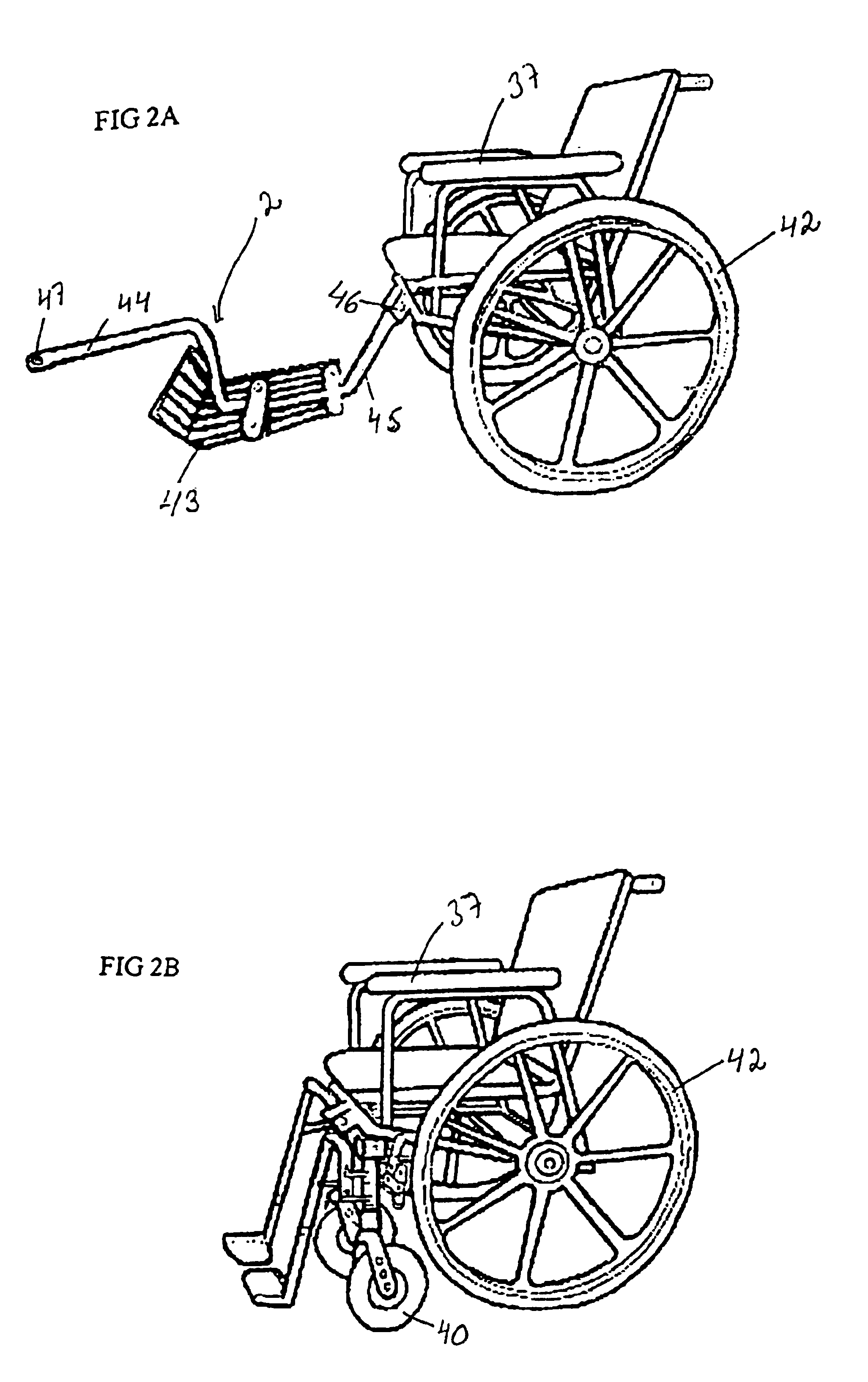Companion rider wheel chair
a companion and wheel chair technology, applied in the direction of wheelchair/patient conveyance, transportation and packaging, bicycle equipment, etc., can solve the problems of not easy to store, large weight, and large width of the wheel chair found in the prior art, and achieve the effect of easy change of seat height and wide width of the wheelchair between the side arms
- Summary
- Abstract
- Description
- Claims
- Application Information
AI Technical Summary
Benefits of technology
Problems solved by technology
Method used
Image
Examples
Embodiment Construction
[0023]In accordance with one aspect of the present invention, a lightweight companion rider wheel chair, a frame having two lower side frame members 30, with wheels 42 mounted at front end 31 and at rear end 32 thereof, and two rear frame members 33, with the lower ends 34 of each of the rear frame members 33 being secured to the rear ends 32 of the lower side frame members 30. In addition, two forwardly extending upper side members 35 are provided, with these upper side frame members 35 being mechanically secured to the upper ends 36 of the two rear frame members 33. With regard to the arms and seat of the wheeled chair, they may be arranged in one of two alternative ways. As one alternative, the forwardly extending upper side members 35 may be the wheelchair arms, and the seat may be supported by a sling from these arms. As another alternative, another set of forwardly extending upper frame members 37 may be provided, with this set constituting the arms of the wheeled chair, and t...
PUM
 Login to View More
Login to View More Abstract
Description
Claims
Application Information
 Login to View More
Login to View More - R&D
- Intellectual Property
- Life Sciences
- Materials
- Tech Scout
- Unparalleled Data Quality
- Higher Quality Content
- 60% Fewer Hallucinations
Browse by: Latest US Patents, China's latest patents, Technical Efficacy Thesaurus, Application Domain, Technology Topic, Popular Technical Reports.
© 2025 PatSnap. All rights reserved.Legal|Privacy policy|Modern Slavery Act Transparency Statement|Sitemap|About US| Contact US: help@patsnap.com



